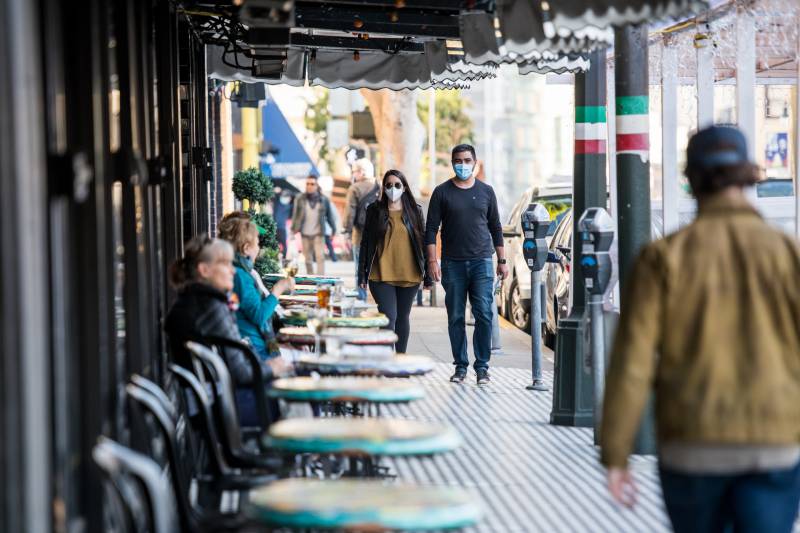San Francisco, Santa Clara and Napa counties join Marin and San Mateo counties, which last month also advanced into the red reopening tier. In that tier, indoor restaurant dining rooms and movie theaters can reopen at 25% capacity, or up to 100 people, whichever is fewer. Gyms and dance and yoga studios can open at 10% capacity. Museums, zoos and aquariums can open indoor activities at 25% capacity.
“Go outdoors. Keep your mask on whether you’re indoors or outdoors,” said Dr. Sara Cody, Santa Clara County's top health officer, in announcing the loosened restrictions. “Keep your distance from others. And finally, get vaccinated when it’s your turn.”
The change follows a dramatic drop in the rate of coronavirus cases, hospitalizations and deaths statewide.
El Dorado, Lassen, Modoc and San Luis Obispo counties also moved up one spot on Tuesday.
“Just remember, six weeks ago, we were announcing over 50,000 cases,” Gov. Gavin Newsom said Monday. “So things are moving in the right direction, things seem to be stabilizing.”
Several counties in the San Francisco Bay Area issued strict-stay-at-home orders nearly a year ago, in advance of a statewide shutdown. Public health officials in the area have, for the most part, been more cautious than their peers in Southern California and in other states about reopening the economy.
After business activity in the region briefly resumed in the fall, it abruptly shut down again in early December after several Bay Area counties preemptively issued stay-at-home orders as the positivity rate surged and the rate of cases climbed. Limited outdoor dining and some indoor and outdoor personal services reopened in late January after the state called off its regional stay-home order.
Wineries can open outdoors with modifications, though bars and distilleries that do not serve food must remain closed. Other retail businesses like clothing stores and florists can go from 25% capacity to 50%.
Rents for apartments and commercial space plummeted as tech workers who could work from anywhere did just that, fleeing for other parts of the state and county that were cheaper and had more elbow room. Downtown eateries that once fed throngs of hungry office workers and tourists at lunch were left in the lurch.
